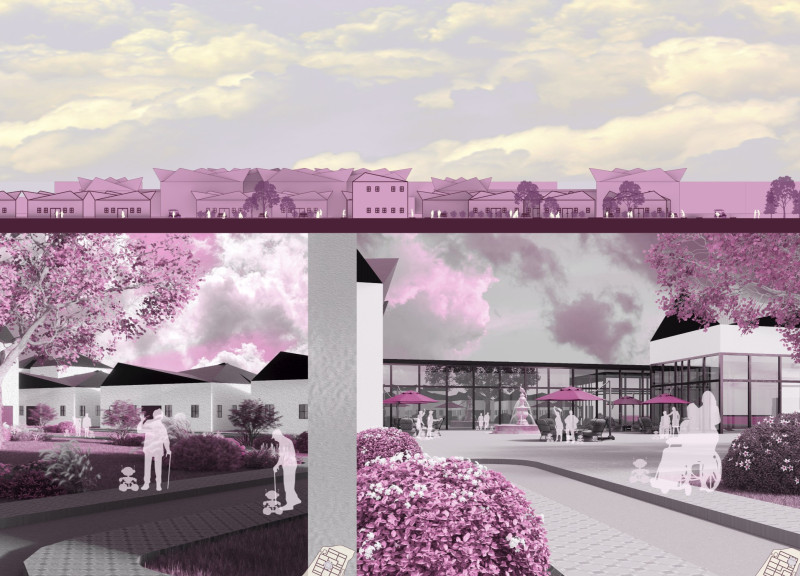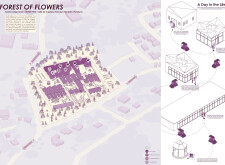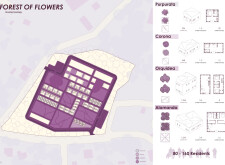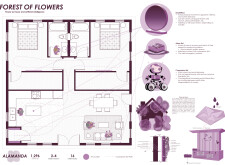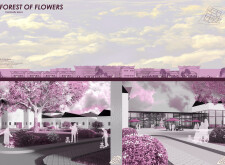5 key facts about this project
### Project Overview
The Forest of Flowers is located in Valle de Angeles, Francisco Morazán, Honduras, and serves as a senior living center. This designed community aims to enhance the quality of life for elderly residents by creating an environment that fosters social interaction, accessibility, and integration with natural surroundings and advanced technologies.
### Spatial Strategy and Organization
The spatial layout emphasizes accessibility and a sense of belonging, featuring distinct zones to accommodate various functions. Centralized healthcare facilities provide essential medical care and wellness programs, while public and commercial areas facilitate social gatherings, shopping options, and dining experiences. Private residential zones offer a variety of housing typologies tailored to meet diverse resident needs, ranging from compact units for individuals or couples to larger accommodations promoting community living.
### Materiality and Technological Integration
The design prioritizes the use of sustainable materials, such as local timber for structural components, glass for natural light optimization, reinforced concrete for durability, and green roofs for improved insulation and rainwater management. Incorporating advanced technologies, the project includes features like SmartMirrors for health monitoring, Companion Bots to assist with daily activities, and Alarm Bots for safety oversight, ensuring both comfort and security for residents. Community spaces, including gathering areas and therapeutic gardens, enhance social interaction and well-being, reinforcing the project’s commitment to a supportive living environment.


